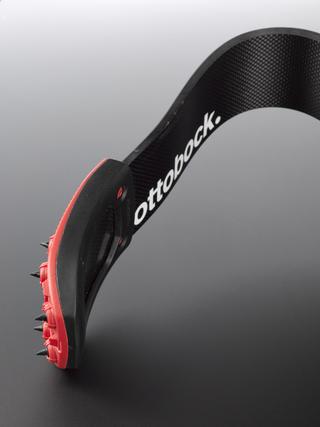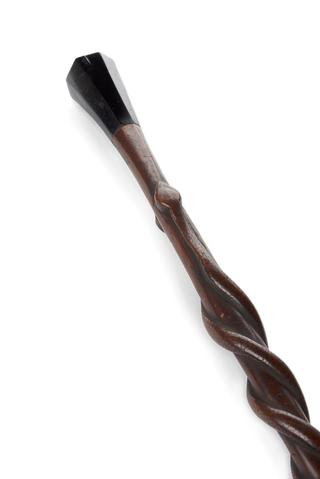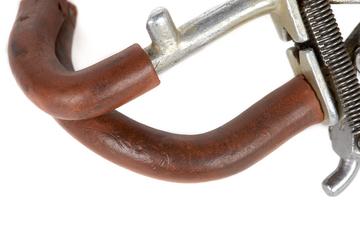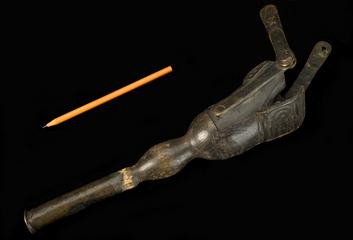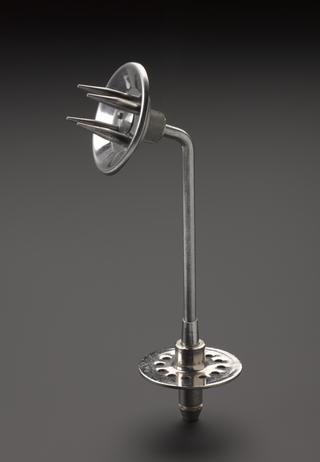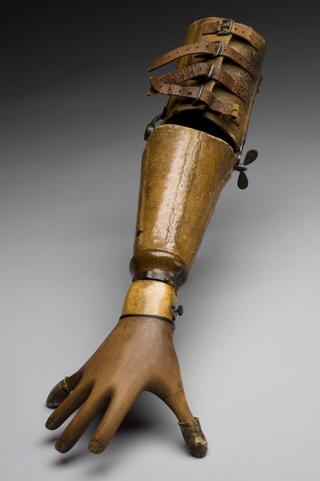


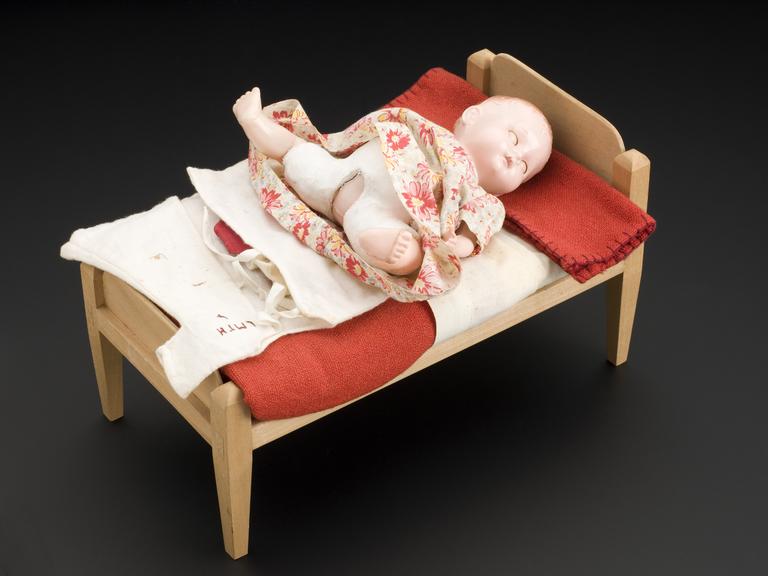

Plastic infant doll, lying in a model bed, with plaster cast applied for congenital dislocation of the hips, probably used to demonstrate prospective treatment, from the Lord Mayor Treloar Orthopaedic Hospital, Alton, Hampshire, England, 1930-1950
This doll is one of a number used at the Lord Mayor Treloar Hospital, in Alton, Hampshire, England, to show parents, and in some cases children, the treatment that the child will undergo. Founded in 1908, the hospital was originally opened to provide specialised treatment for children with orthopaedic conditions, mainly caused by tuberculosis and, later, polio.
Lying on a bed – the bedding marked with the hospital’s initials, “LMTH” – the plastic doll has a plaster cast applied to the hips to help correct hip dysplasia, which is usually diagnosed only in young babies. It occurs when the top of the leg bone is not properly located in the hip socket or not located where the hip socket is expected to develop.
Details
- Category:
- Orthopaedics
- Object Number:
- 2002-364
- Materials:
- wood, plastic, fabric, paper and plaster of paris
- Measurements:
-
overall: 220 mm x 200 mm x 340 mm,
- type:
- teaching doll
- credit:
- North Hampshire Hospitals NHS Trust
